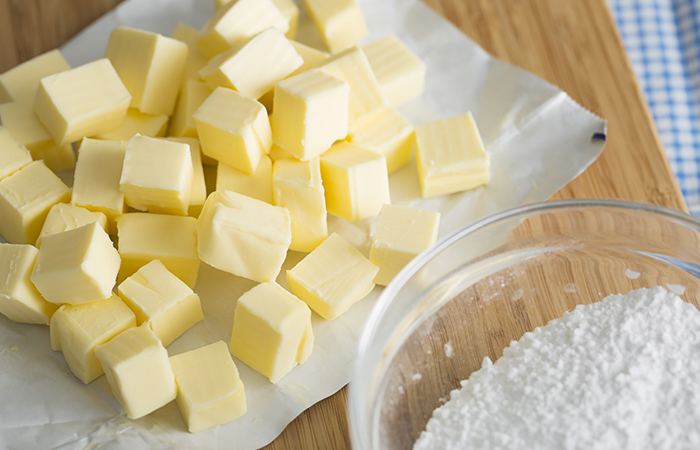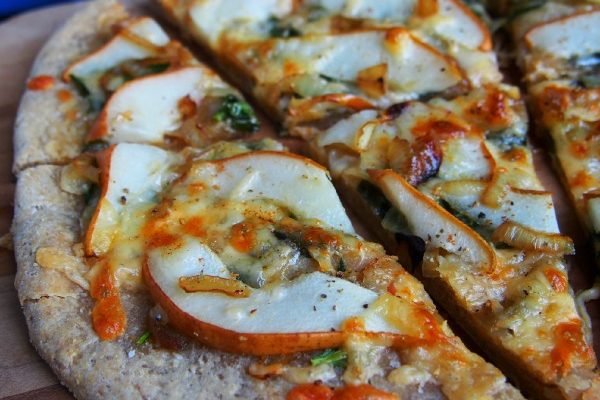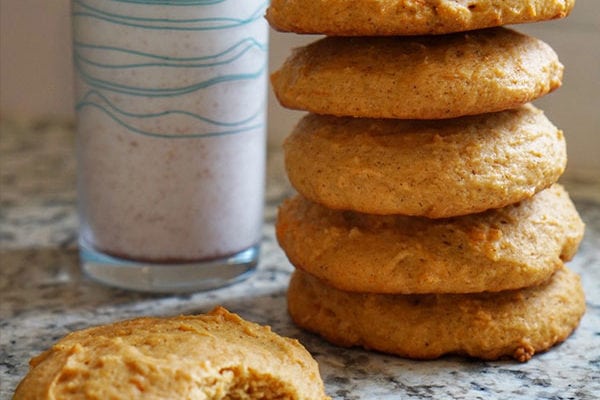How to Use Butter in Cooking and Baking

Butter is basic.
Its naturally sweet essence complements many foods, but even I admit that it’s not perfect for every use. It has a low smoke point and for some techniques you need an oil that can handle higher temperatures. But for other cooking and baking methods, there’s no doubt—butter is best.
Pan Frying
Pan frying small, thinner cuts of meat or fish in a bit of butter gives you golden brown colors and great flavors. Just preheat your skillet over medium heat and add the butter. When it’s melted, add the meat or fish. Cook, watching closely, and adjust the heat if needed.
Caramelizing
Caramelizing chopped or thinly sliced vegetables in butter brings out their natural sugars. Just add veggies to a small amount of butter and cook, stirring frequently, over low heat until they are sweet and beginning to brown.
Searing
Although butter doesn’t work for high-heat searing, there’s a way to still get the rich flavor. Go ahead and sear the steak, seafood or chicken using another fat. Right before it’s done, add a couple tablespoons of butter. Use a spoon to baste the meat with butter. It helps with browning and adds another layer of flavor.
Finishing Sauces
For richness and body, swirl a tablespoon or two of cold butter into a pan sauce right before serving. Cold butter works better than warm because it reduces the chance of your sauce separating.
Baking
In baking butter provides richness, tenderness and structure to pies, cakes, cookies, muffins and more. The way it works depends on its temperature and how it is combined with other ingredients. Want to know there difference between salted and unsalted butter? Read more about it here.
(Go Bold With Butter’s Plum Raspberry Pie)
- Use refrigerator temperature butter when a recipe says to cut the butter into other ingredients. Just add COLD butter and use a pastry blender to break it into pieces about the size of peas. Pie pastry, scones and biscuits depend on distinct pieces of butter distributed through the dough. They melt during baking and leave behind air pockets, creating flakey layers.
- Cool butter (65° to 70°F is ideal, but you don’t have to measure) is best for creaming. That’s the process of beating together butter and sugar. Start with cool butter and a cool bowl. Beat the butter alone on medium speed for 30 to 60 seconds, then add sugar and continue beating until light and fluffy. This creates fine air bubbles in the butter, making tender cookies and cakes.
(Sweet Potato Cookies with Warm Cinnamon Milk)
- Softened butter is perfect for spreads. The pliable texture makes it easier to mix in cream cheese, honey, powdered sugar, chopped fresh herbs or citrus peel needed for a scrumptious spread.
- Melted butter adds richness and helps mix other ingredients in simple batters like pancakes or brownies. In cookies, it creates flat, thin and crispy wafers.
(Go Bold With Butter’s Best Buttermilk Pancakes)
Any way you use butter, even just enjoying its creamy, freshness on warm toast, makes eating more delicious.





